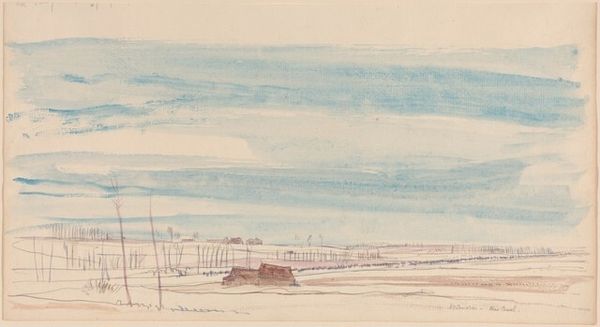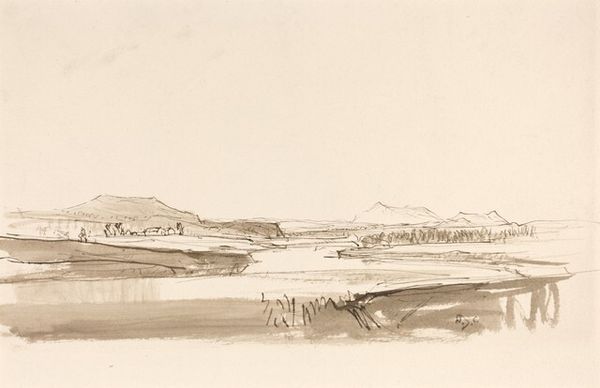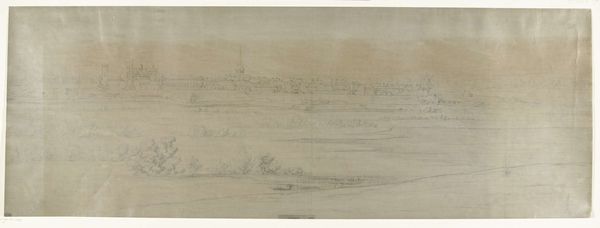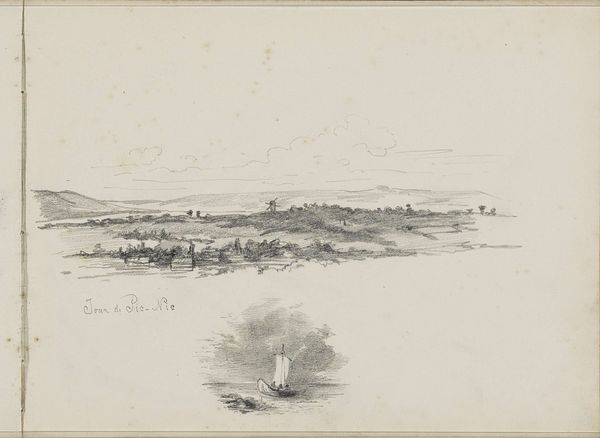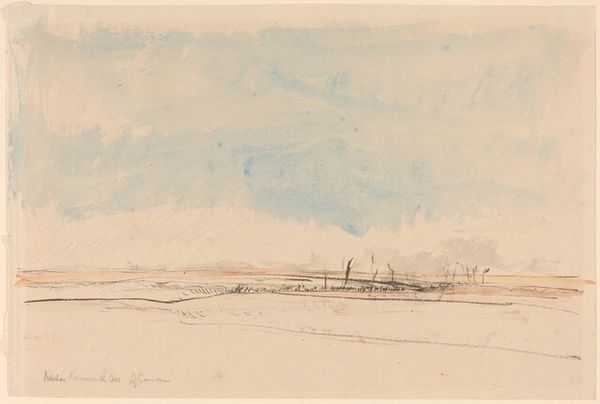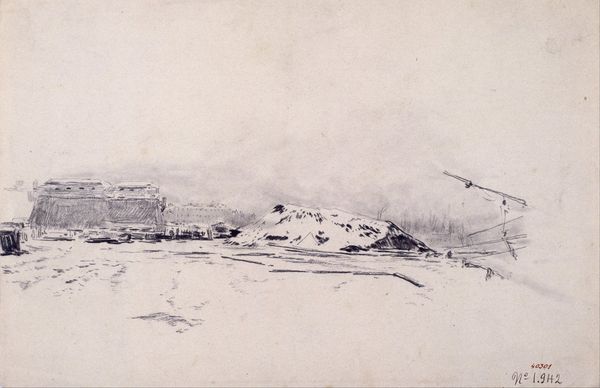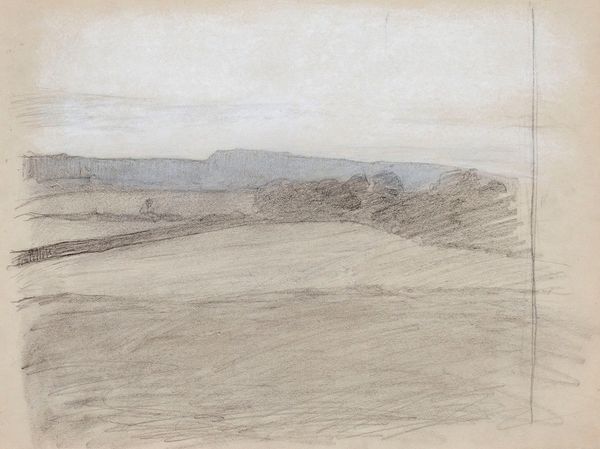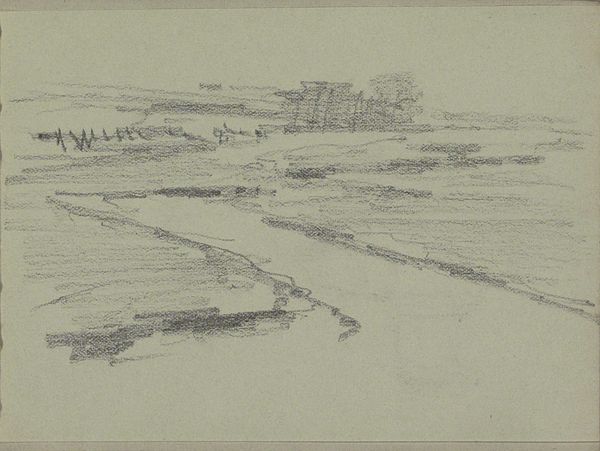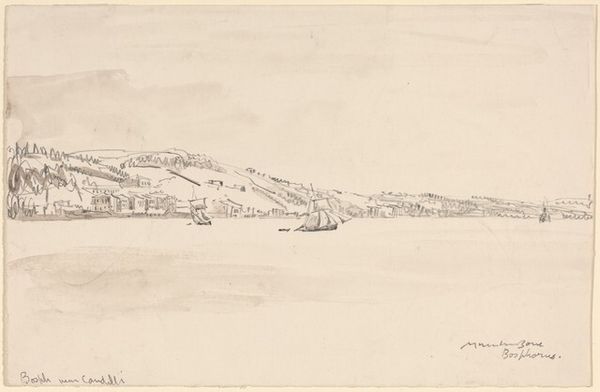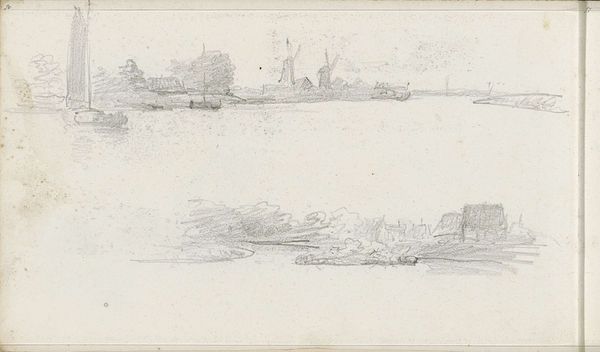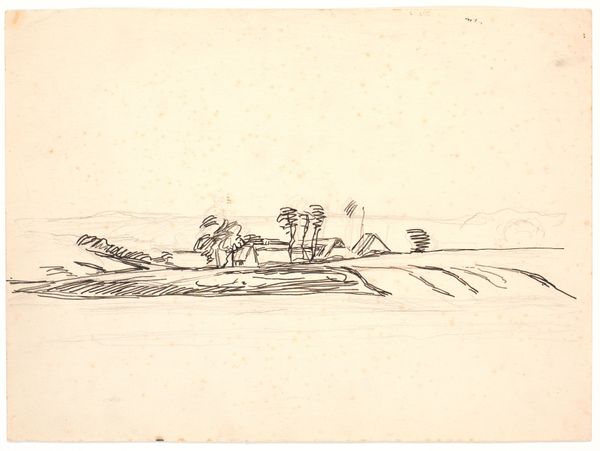
drawing, pencil, graphite, charcoal
#
drawing
#
landscape
#
pencil
#
graphite
#
charcoal
Dimensions: overall: 23.6 x 34.5 cm (9 5/16 x 13 9/16 in.)
Copyright: National Gallery of Art: CC0 1.0
Curator: At first glance, it’s muted. A restrained palette of grays, browns, and yellows sketch out what looks like an open landscape, conveying a melancholic stillness. Editor: This is a landscape drawing entitled "Kemmel," by David Young Cameron. It appears the artist employed graphite, charcoal and pencil as his primary materials to bring this vision to life. The lack of precise dating makes situating it within his overall artistic timeline a bit challenging. Curator: The use of such traditional media gives it an almost… academic air. Pencil, graphite and charcoal require specific methods; were the artist's choices influenced by restrictions or perhaps material availability during his time? Or could it have been the impact that they wanted to create? The blending of these would give it an intense darkness. Editor: Considering the title, “Kemmel,” and Cameron’s service as an official war artist during both World Wars, it’s plausible this depicts the Kemmelberg Ridge in Flanders. If so, the starkness speaks volumes. The choice of materials reinforces a somber, almost industrial landscape, mirroring the grim realities of war. We should also acknowledge how war affected materiality, rationing, and supply routes must have significantly impacted the availability and use of traditional drawing mediums during this period, leading artists to experiment with found objects and less conventional resources. Curator: Absolutely, the limited tonal range emphasizes desolation. And note the horizontal composition, divided into distinct bands: foreground, mid-ground and the expansive sky. It reminds one of the conventions employed in battle imagery where capturing expanse and location became integral in communication. Editor: Beyond its purely representational function, artwork depicting Kemmel likely also functioned as propaganda, and that would serve as the driving force. War art became part of the larger war machine by contributing to the political climate of that period, thus bolstering support for the state's operations. I think the artwork itself becomes a contested area with powerful and very definite consequences for everybody concerned. Curator: Fascinating! The piece embodies a quiet visual testament to the aftermath and impact of such events. Thank you for providing the social-political context of its creation. Editor: It’s these intersections of art, history and material reality that enrich our experience and understanding. A picture is never *just* a picture.
Comments
No comments
Be the first to comment and join the conversation on the ultimate creative platform.
